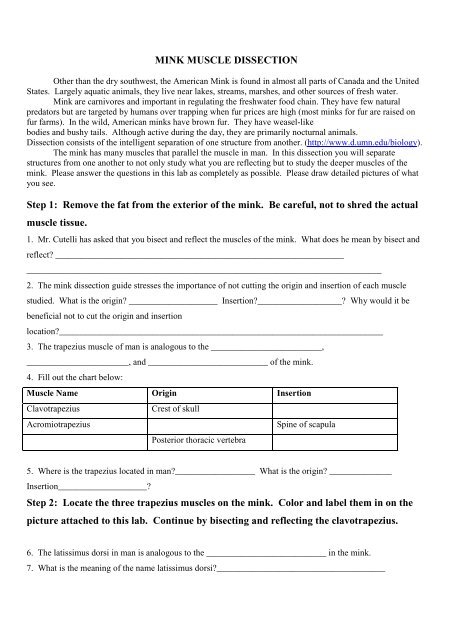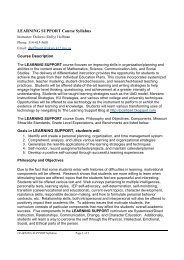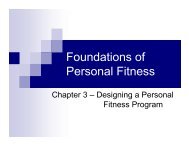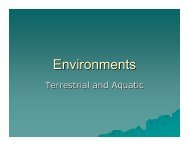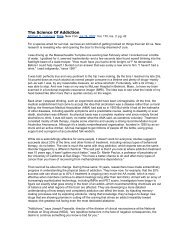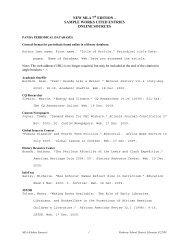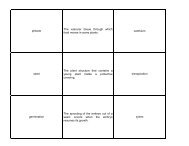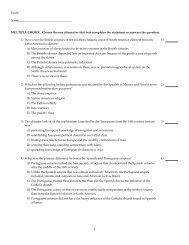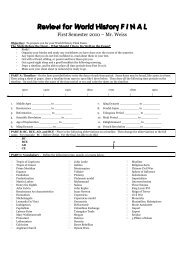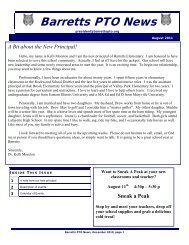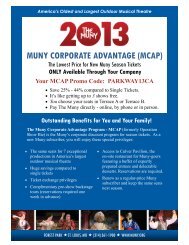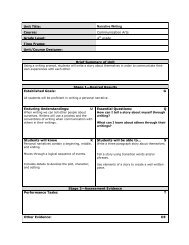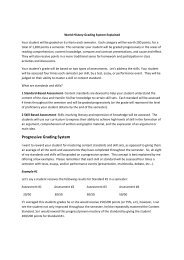MINK MUSCLE DISSECTION Guidem
MINK MUSCLE DISSECTION Guidem
MINK MUSCLE DISSECTION Guidem
You also want an ePaper? Increase the reach of your titles
YUMPU automatically turns print PDFs into web optimized ePapers that Google loves.
<strong>MINK</strong> <strong>MUSCLE</strong> <strong>DISSECTION</strong><br />
Other than the dry southwest, the American Mink is found in almost all parts of Canada and the United<br />
States. Largely aquatic animals, they live near lakes, streams, marshes, and other sources of fresh water.<br />
Mink are carnivores and important in regulating the freshwater food chain. They have few natural<br />
predators but are targeted by humans over trapping when fur prices are high (most minks for fur are raised on<br />
fur farms). In the wild, American minks have brown fur. They have weasel-like<br />
bodies and bushy tails. Although active during the day, they are primarily nocturnal animals.<br />
Dissection consists of the intelligent separation of one structure from another. (http://www.d.umn.edu/biology).<br />
The mink has many muscles that parallel the muscle in man. In this dissection you will separate<br />
structures from one another to not only study what you are reflecting but to study the deeper muscles of the<br />
mink. Please answer the questions in this lab as completely as possible. Please draw detailed pictures of what<br />
you see.<br />
Step 1: Remove the fat from the exterior of the mink. Be careful, not to shred the actual<br />
muscle tissue.<br />
1. Mr. Cutelli has asked that you bisect and reflect the muscles of the mink. What does he mean by bisect and<br />
reflect? _________________________________________________________________<br />
________________________________________________________________________________<br />
2. The mink dissection guide stresses the importance of not cutting the origin and insertion of each muscle<br />
studied. What is the origin? ____________________ Insertion?___________________? Why would it be<br />
beneficial not to cut the origin and insertion<br />
location?_________________________________________________________________________<br />
3. The trapezius muscle of man is analogous to the _________________________,<br />
_______________________, and ___________________________ of the mink.<br />
4. Fill out the chart below:<br />
Muscle Name Origin Insertion<br />
Clavotrapezius<br />
Acromiotrapezius<br />
Crest of skull<br />
Posterior thoracic vertebra<br />
Spine of scapula<br />
5. Where is the trapezius located in man?__________________ What is the origin? ______________<br />
Insertion____________________?<br />
Step 2: Locate the three trapezius muscles on the mink. Color and label them in on the<br />
picture attached to this lab. Continue by bisecting and reflecting the clavotrapezius.<br />
6. The latissimus dorsi in man is analogous to the ___________________________ in the mink.<br />
7. What is the meaning of the name latissimus dorsi?______________________________________
8. This is a superficial muscle of the back. What does superficial mean? _______________________<br />
8a. Locate the latissimus dorsi on the picture of man attached and color and label it. Locate it on the mink<br />
picture and label and color it.<br />
Step 3: Locate the latissimus dorsi on the mink and bisect and reflect it.<br />
9. The spinodeltoid and acromiodeltoideus muscle in the mink are analogous to the ______________________<br />
muscle in man?<br />
10. What is the meaning of the muscle name deltoid? ____________________________. Locate and label it<br />
on the man diagram that is attached.<br />
Step 4: Locate the spinodeltoideus.<br />
11. The rhomboids of the mink are known as the ____________________, _____________________,<br />
______________________. These three muscles look like straps running across the mink. They are considered<br />
deeper muscles of the neck and shoulder. What is meant by deeper? _________________<br />
_______________________________________________________________________________.<br />
12. Where does the rhomboideus major originate in man? ___________________________________<br />
Insert?________________________.<br />
12a. Locate the rhomboids of the mink in the picture, color and label them.<br />
13. The levator scapular ventralis in the mink is analogous to the __________________ muscle in man. Locate<br />
the levator scapular ventralis in the mink picture attached, label and color.<br />
13. The splenius capitis in man man is analogous to the ____________________ in the mink.<br />
14. What actions does the splenius muscle allow the mink to do? ______________________________<br />
_________________________________________________________________________________.<br />
Step 5: Locate the rhomboids, levator scapular ventralis, and the splenius on the mink.<br />
15. What is meaning of the muscle name serratus anterior? _________________________________.<br />
16. Where does this muscle originate on the mink? ______________________ Insert? ___________<br />
__________________________.<br />
17. What action does this muscle allow the mink to do? ____________________________________<br />
Step 6: Locate the serratus anterior on the mink.<br />
18. Using a directional term explain where the pectoralis major and minor are located on the mink.<br />
___________________________.<br />
19. Draw a sketch of the pectoralis major in the box below. Be sure to notice the way the fibers of the muscle<br />
are running.
Step 7: Locate the pectoralis major. Then bisect and reflect it. Deep to the pectoralis<br />
major you should find the pectoralis minor. Draw a sketch of it below.<br />
20. The four layers of the abdominal wall of the mink are known as the ________________________,<br />
__________________________, _________________________________, and _______________________.<br />
21. What does oblique mean? _____________________________<br />
22. Why is the transverse abdominus named such?______________________________________________<br />
23. Why is the rectus abdominus name such?__________________________________________________<br />
Step 8: Make an incision along the ventral side of the mink below the rib cage. Try to<br />
separate the four layers of the abdominal wall of the mink. Notice the ways the fibers of<br />
each are running. In the diagram below draw four lines in each box depicting the flow of<br />
the muscle fibers of the abdomen.<br />
External oblique<br />
Transverse abdominal<br />
Internal oblique<br />
Rectus abdominus


